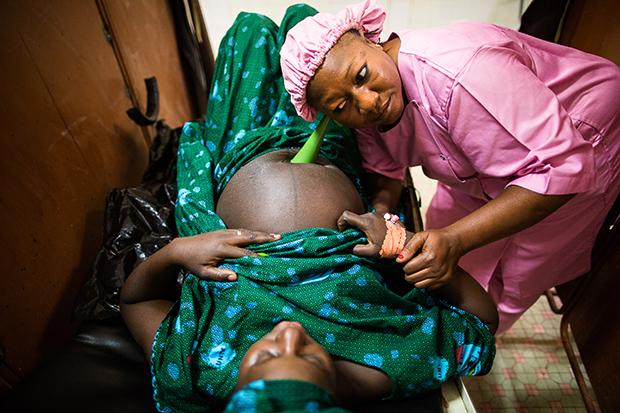Where We Work
See our interactive map


We strive for a world where everyone, everywhere has the health care they need to thrive. Our new photo exhibit provides a glimpse into that vision as it becomes a reality.
Our first local photo exhibit is on display at FRANK Gallery in Chapel Hill, NC, through February 7, 2016.
A midwife in Mali holds the arm of a pregnant woman while listening to her growing baby’s heartbeat. Click.
A nurse in India cradles a newborn’s head and shows the mother how to breastfeed. Click.
A nurse in Uganda carefully explains different types of contraceptive options to a new mother who isn’t ready for another pregnancy. Click. (I was there with my camera to capture this one.)
The human touch in health care has inspired us for 35 years.
Images like these help us at IntraHealth International get our point across: health workers are the ones who provide health care; health workers are the ones who save lives. And they do it even though in many parts of the world, they work in the toughest conditions, often without electricity, running water, or sufficient medicines and supplies.
The human touch in health care has inspired us for more than 35 years and throughout our work in more than 100 countries.
We know we in the global health field need to focus on health workers if we’re going to achieve universal health coverage and ensure access to the essential services we all need—including antenatal care and skilled birth attendance, family planning services, child immunization, HIV prevention and treatment, and more.
Because right now 400 million of us don’t have access to these life-saving health services. And there’s a shortage of 7.2 million doctors, nurses, and midwives around the world to provide them.
At IntraHealth, we envision a world where everyone, everywhere has the health care they need to thrive. And that means ensuring there are enough health workers trained and supported to provide the care clients need–the care to reach an AIDS Free Generation and end preventable mother and child deaths.
That’s the reason we make photographs, right? So people understand and care? We’re excited that, starting this week at the FRANK Gallery in Chapel Hill, NC, we’re bringing that vision home to our local community, where we started, where our headquarters office is, and where I work. Our first local photography show will include some of our favorite photos of our maternal and child health work. I’m delighted that two of my own photos, of dedicated health workers helping mothers in Ghana and Uganda, are included in the show.
Each photograph is a glimpse into our vision as it becomes a reality.
Our opening events are on December 11 and January 8, 6 – 9 p.m. If you’re in the Triangle area, please join us. We’ll be there and look forward to meeting you and answering any questions you might have about our work and the need to focus on the health workforce.
Click through our Flickr slideshow or the gallery to the right and get a preview of our show—The Human Touch: Portraits of Care. Then, please help us spread the word on Twitter and elsewhere:
Photo above by Trevor Snapp for IntraHealth International (A Malian midwife provides life-saving care)
Get the latest updates from the blog and eNews




